2. Bartlett JG, Dowell SF, Mandell LA, File TM Jr, Musher DM, Fine MJ. Practice guidelines for the management of community-acquired pneumonia in adults. Infectious Diseases Society of America. Clin Infect Dis. 2000; 31:347–382. PMID:
10987697.
4. Song JH, Jung KS, Kang MW, Kim DJ, Pai H, Suh GY, et al. Treatment guidelines for community-acquired pneumonia in Korea: an evidence-based approach to appropriate antimicrobial therapy. Tuberc Respir Dis. 2009; 67:281–302.

5. Rello J, Bodi M, Mariscal D, Navarro M, Diaz E, Gallego M, et al. Microbiological testing and outcome of patients with severe community-acquired pneumonia. Chest. 2003; 123:174–180. PMID:
12527619.

6. Houck PM, Bratzler DW, Nsa W, Ma A, Bartlett JG. Timing of antibiotic administration and outcomes for Medicare patients hospitalized with community-acquired pneumonia. Arch Intern Med. 2004; 164:637–644. PMID:
15037492.

7. Mitka M. JCAHO tweaks emergency departments' pneumonia treatment standards. JAMA. 2007; 297:1758–1759. PMID:
17456810.

8. Mandell LA, Wunderink RG, Anzueto A, Bartlett JG, Campbell GD, Dean NC, et al. Infectious Diseases Society of America/American Thoracic Society consensus guidelines on the management of community-acquired pneumonia in adults. Clin Infect Dis. 2007; 44(Suppl 2):S27–S72. PMID:
17278083.

9. Murin S, Bilello KS. Respiratory tract infections: another reason not to smoke. Cleve Clin J Med. 2005; 72:916–920. PMID:
16231688.

10. Ansaldi F, Turello V, Lai P, Bastone G, De Luca S, Rosselli R, et al. Effectiveness of a 23-valent polysaccharide vaccine in preventing pneumonia and non-invasive pneumococcal infection in elderly people: a large-scale retrospective cohort study. J Int Med Res. 2005; 33:490–500. PMID:
16222881.

11. Vila-Corcoles A, Ochoa-Gondar O, Hospital I, Ansa X, Vilanova A, Rodriguez T, et al. Protective effects of the 23-valent pneumococcal polysaccharide vaccine in the elderly population: the EVAN-65 study. Clin Infect Dis. 2006; 43:860–868. PMID:
16941367.

12. Fine MJ, Auble TE, Yealy DM, Hanusa BH, Weissfeld LA, Singer DE, et al. A prediction rule to identify low-risk patients with community-acquired pneumonia. N Engl J Med. 1997; 336:243–250. PMID:
8995086.

13. Fine MJ, Smith MA, Carson CA, Mutha SS, Sankey SS, Weissfeld LA, et al. Prognosis and outcomes of patients with community-acquired pneumonia: a meta-analysis. JAMA. 1996; 275:134–141. PMID:
8531309.

14. Bowton DL, Scuderi PE, Haponik EF. The incidence and effect on outcome of hypoxemia in hospitalized medical patients. Am J Med. 1994; 97:38–46. PMID:
8030655.

15. Fine MJ, Hough LJ, Medsger AR, Li YH, Ricci EM, Singer DE, et al. The hospital admission decision for patients with community-acquired pneumonia: results from the pneumonia Patient Outcomes Research Team cohort study. Arch Intern Med. 1997; 157:36–44. PMID:
8996039.
16. Lim WS, van der Eerden MM, Laing R, Boersma WG, Karalus N, Town GI, et al. Defining community acquired pneumonia severity on presentation to hospital: an international derivation and validation study. Thorax. 2003; 58:377–382. PMID:
12728155.

17. Yahav D, Leibovici L, Goldberg E, Bishara J, Paul M. Time to first antibiotic dose for patients hospitalised with community-acquired pneumonia. Int J Antimicrob Agents. 2013; 41:410–413. PMID:
23453615.

18. Bader MS, Abouchehade KA, Yi Y, Haroon B, Bishop LD, Hawboldt J. Antibiotic administration longer than eight hours after triage and mortality of community-acquired pneumonia in patients with diabetes mellitus. Eur J Clin Microbiol Infect Dis. 2011; 30:881–886. PMID:
21286928.

19. Gleason PP, Meehan TP, Fine JM, Galusha DH, Fine MJ. Associations between initial antimicrobial therapy and medical outcomes for hospitalized elderly patients with pneumonia. Arch Intern Med. 1999; 159:2562–2572. PMID:
10573046.

20. Cao B, Huang Y, She DY, Cheng QJ, Fan H, Tian XL, et al. Diagnosis and treatment of community-acquired pneumonia in adults: 2016 clinical practice guidelines by the Chinese Thoracic Society, Chinese Medical Association. Clin Respir J. 2018; 12:1320–1360. PMID:
28756639.

21. The Advisory Committee on Immunization Practices (ACIP). Summary of recommendations for adult immunization [Internet]. St. Paul: Immunization Action Coalition;2011. cited 2017 Dec 11. Available from:
http://www.immunize.org/catg.d/p2011.pdf.
22. The Korean Society of Infectious Diseases. Adult immunization guidelines [Internet]. Seoul: The Korean Society of Infectious Diseases;2017. cited 2017 Dec 11. Available from:
http://www.ksid.or.kr/data/sub07.html.
23. Jha AK, Li Z, Orav EJ, Epstein AM. Care in U.S. hospitals: the Hospital Quality Alliance program. N Engl J Med. 2005; 353:265–274. PMID:
16034012.
25. Masica AL, Richter KM, Convery P, Haydar Z. Linking joint commission inpatient core measures and national patient safety goals with evidence. Proc (Bayl Univ Med Cent). 2009; 22:103–111. PMID:
19381308.

26. Levin KP, Hanusa BH, Rotondi A, Singer DE, Coley CM, Marrie TJ, et al. Arterial blood gas and pulse oximetry in initial management of patients with community-acquired pneumonia. J Gen Intern Med. 2001; 16:590–598. PMID:
11556939.

27. Song JH, Jung KS. Treatment guidelines for community-acquired pneumonia in Korea: an evidence-based approach to appropriate antimicrobial therapy. J Korean Med Assoc. 2010; 53:20–42.

28. Chassin MR, Loeb JM, Schmaltz SP, Wachter RM. Accountability measures: using measurement to promote quality improvement. N Engl J Med. 2010; 363:683–688. PMID:
20573915.
29. Kumbhani DJ, Fonarow GC, Cannon CP, Hernandez AF, Peterson ED, Peacock WF, et al. Predictors of adherence to performance measures in patients with acute myocardial infarction. Am J Med. 2013; 126:74.e1–74.e9.

30. Lee JS, Nsa W, Hausmann LR, Trivedi AN, Bratzler DW, Auden D, et al. Quality of care for elderly patients hospitalized for pneumonia in the United States, 2006 to 2010. JAMA Intern Med. 2014; 174:1806–1814. PMID:
25201438.

31. Nuti SV, Wang Y, Masoudi FA, Bratzler DW, Bernheim SM, Murugiah K, et al. Improvements in the distribution of hospital performance for the care of patients with acute myocardial infarction, heart failure, and pneumonia, 2006-2011. Med Care. 2015; 53:485–491. PMID:
25906012.

32. Marciniak TA, Ellerbeck EF, Radford MJ, Kresowik TF, Gold JA, Krumholz HM, et al. Improving the quality of care for Medicare patients with acute myocardial infarction: results from the Cooperative Cardiovascular Project. JAMA. 1998; 279:1351–1357. PMID:
9582042.

33. Larson JS, Muller A. Managing the quality of health care. J Health Hum Serv Adm. 2002; 25:261–280. PMID:
15188996.
34. Costante PA. AMAP: toward standardized physician quality data. American Medical Accreditation Program. N J Med. 1999; 96:47–48.
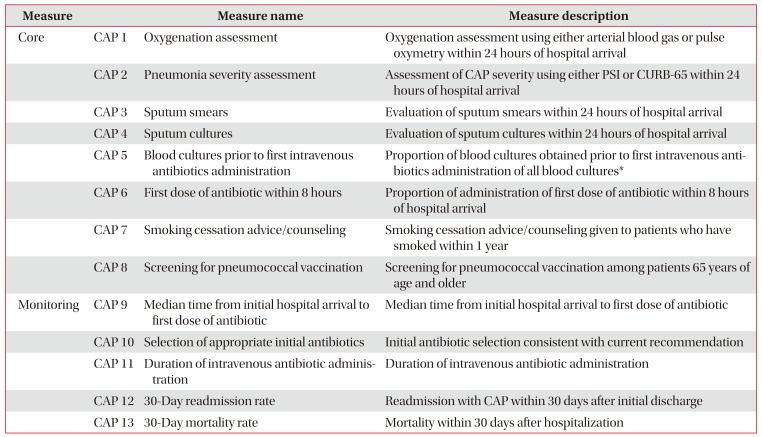
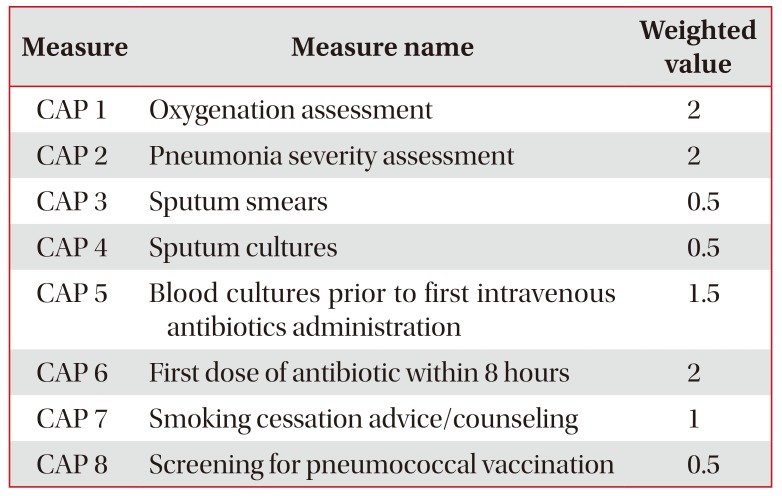
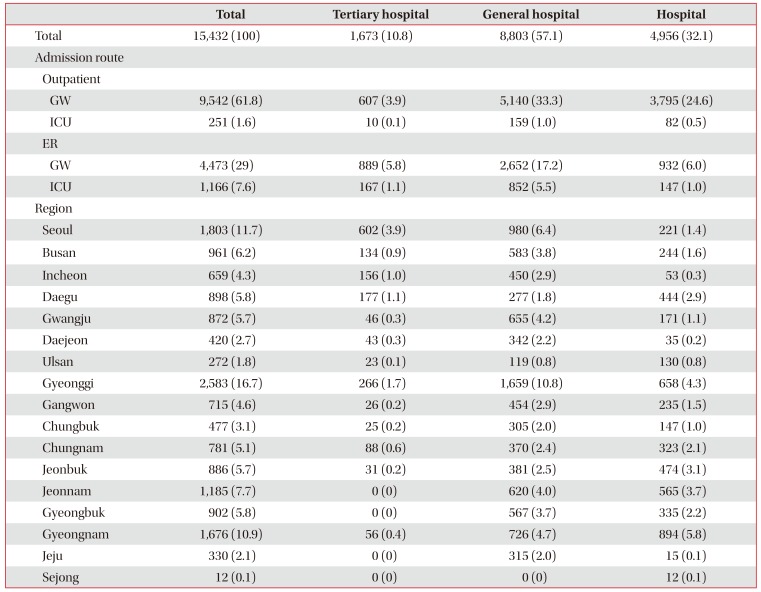
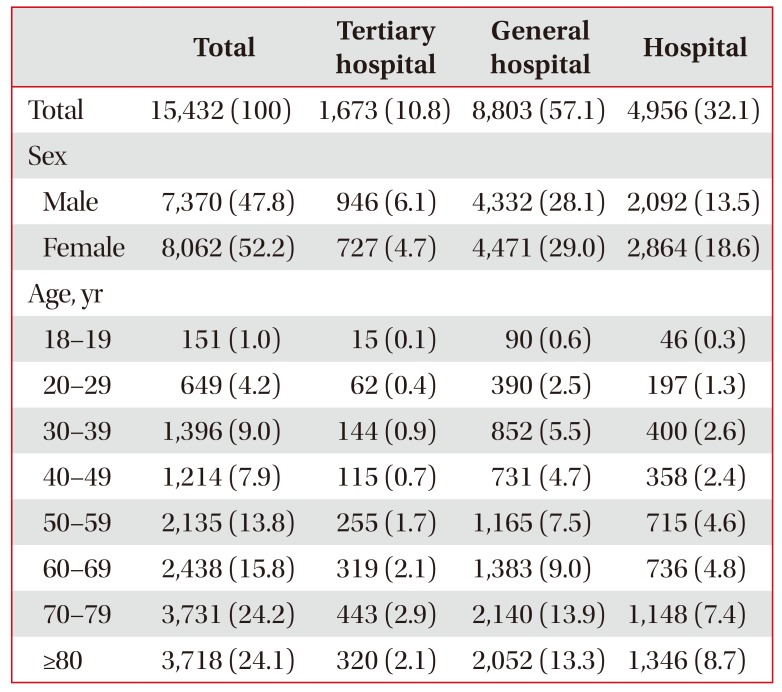
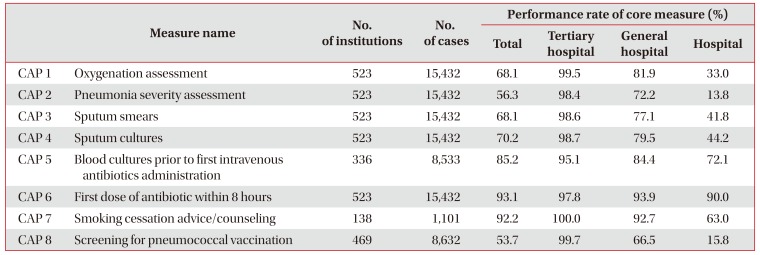





 PDF
PDF ePub
ePub Citation
Citation Print
Print






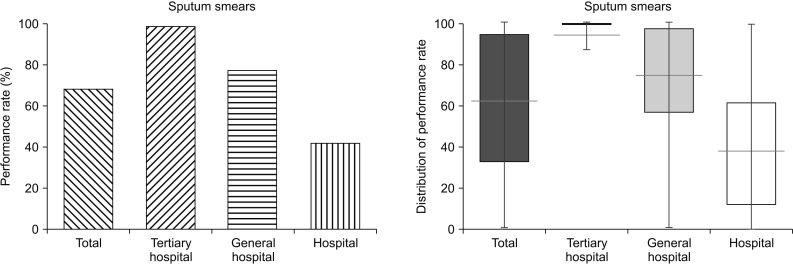


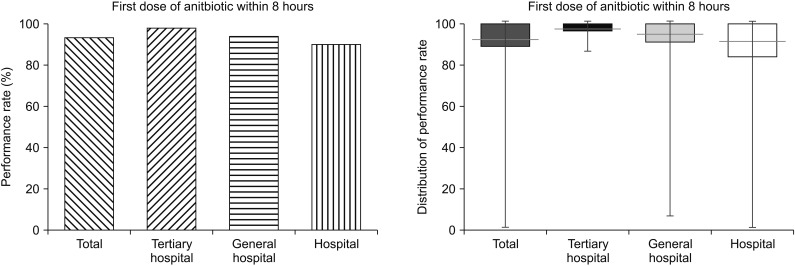


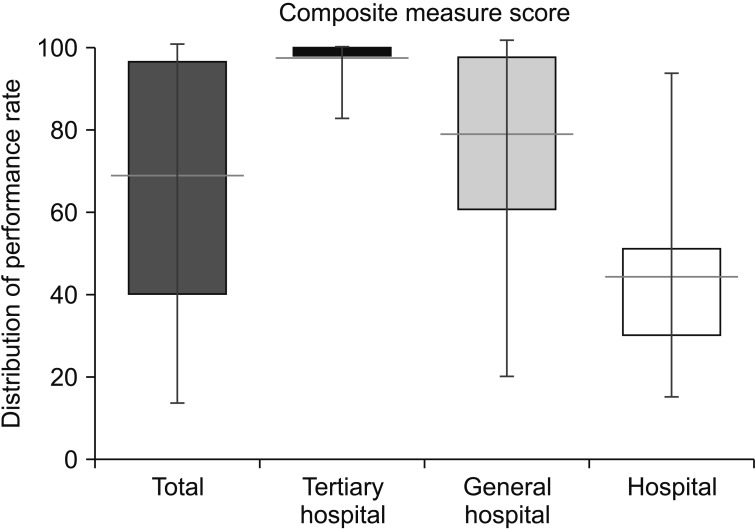
 XML Download
XML Download